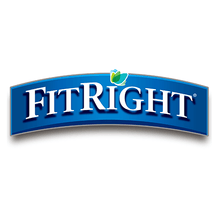Research shows that older adults want to continue living in their homes for as long as possible. However, in order for them to do so, their homes need to be safe and able to accommodate their changing mobility needs.
Considering the fact that millions of older adults—one in four—fall each year and that the most serious falls occur in and around the home, it is important that older adults take steps to ensure their homes are safe—and to reduce their risk of falling while at home.
Taking just a few simple precautions can help not just older adults but people of any age, ensure their homes are safe while reducing their risk of falls.
Stairways
Make sure all handrails are securely fastened. Ensure that both sides of all stairways have handrails.
Floors and Rugs
Make sure all floor boards are even and that all rugs are secured to the floor with tacks, non-skid pads or double-sided rug tape. Use non-skid floor wax when waxing floors.
Bathroom
Ensure safe movement in the bathroom, bathtub and/or shower. Remove soap build-up in bathtub or shower on a regular basis. Place non-slip strips in the bathtub and/or shower. Install grab bars near the toilet and in the bathtub and/or shower. Install adjustable-height showerheads. Secure bath mats with non-slip, double-sided rug tape.
Kitchen
Keep frequently used items in easy-to reach locations. Ensure that all step stools are stable and have handles for easy use. Lighting Place nightlights in hallways, bedrooms, bathrooms and stairways. Install light switches at the top and bottom of stairways. Place a lamp and a telephone near the bed. Ensure that all rooms and hallways are properly lit.
All Rooms
Remove obstacles to safe movement from all rooms and hallways. Remove newspapers, boxes, electrical and phone cords, plants, furniture and other impediments from high-traffic areas. Store clothing, bed coverings and other household items where they can be easily reached.
Outside the Home
Repair holes and uneven joints on walkways. Ensure lighting is working in entryways, garages and other areas. Check that handrails are securely fastened and that both sides of all stairs have handrails. Remove leaves, snow and ice from stairs and walkways. Make walking safer by using eco-friendly salt or sand during the winter months.
In addition to identifying fall hazards in the home and making the changes described here, it is also important for older adults to do these things:
Consult with a physician or pharmacist. Ask about the effects of any medications being taken. Some medications can cause dizziness or other issues that may lead to falls. As people age, the effects of medications may change.
Get annual vision exams. People of all ages should get their eyes checked and update any eyeglass prescriptions every year. Problems with vision and depth perception can cause falls.
Select the appropriate footwear. Be careful when choosing shoes as some can cause falls. Make sure shoes are non-slip and that the soles are not too thick.
Exercise! Older adults can reduce their risk of falls by staying physically active, particularly by participating in exercise programs that enhance balance and coordination. Many communities offer exercise programs for older adults, some of which focus on fall prevention. Before starting any exercise program, check with a physician to make sure it is right for you.






